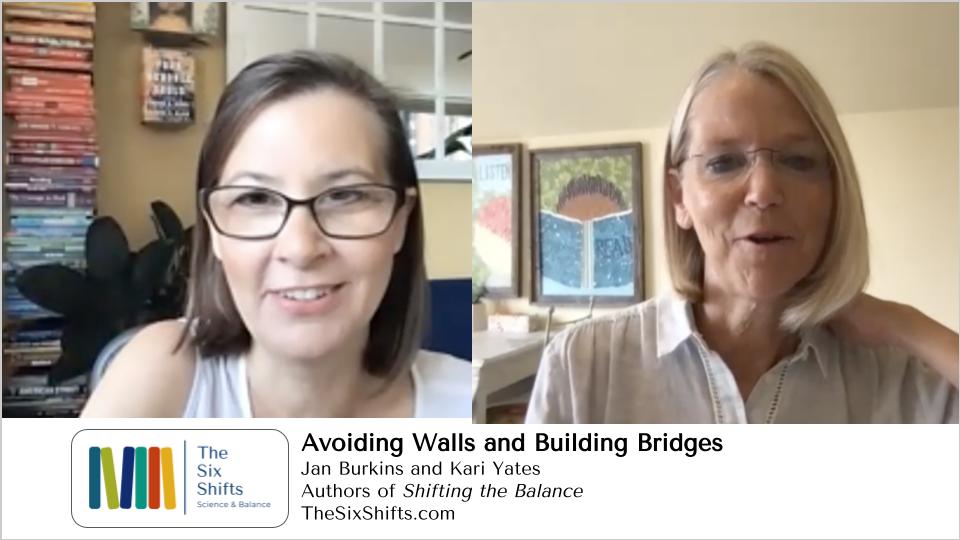Just not nearly as helpful.
A while back, Marnie Ginsburg of Reading Simplified called us “bridge builders,” referring to the way our work seeks to connect reading communities that are often at odds. We are touched and honored by that moniker, and have really tried to lean into it.
Thinking of our work as bridge-building helps us stay in a courageous space, rather than shutting down or disengaging when the work gets intellectually or emotionally challenging.
We didn’t start off thinking of our work as bridge-building, though. It was simply a commitment to try to sort through information.
Writing Shifting the Balance actually began with a lot of reading and study. Reading books. Reading articles. Reading research summaries. Listening to podcasts. We read the work of people like Mark Seidenberg, Maryanne Wolf, and Marilyn Adams.
And as we read, we noticed some things about how we were feeling as we discovered some substantial but necessary changes to our practice.
To support ourselves and others in processing the heart work associated with big change, we also began to study the science of how humans change. And to do so we read the work of people like Brene’ Brown, Adam Grant, and Chip and Dan Heath.
In the end, all of this study resulted in Shifting the Balance, both the book and the online class. But it also resulted in a framework and a tool we refer to as “Bridges and Walls.” This tool identifies five moves that we all sometimes make as humans that put up walls, resulting in learning being shut down and dialogue being blocked. For each wall, however, there is also a corresponding bridge. These bridges enable us to push past our triggers and stay engaged in the dialogue, even when deeply held beliefs might be being challenged.
We reflect on the “Bridges and Walls” tool in this video.
You can find a one-pager of the “Bridges and Walls” tool–available as a free download--on our website. We hope it helps you navigate tricky conversations and stay present when you bump into ideas that challenge your thinking.
Most of all, we hope this tool helps you keep both an open heart and an open mind as you navigate the waters of change.
Here’s to building bridges!
Jan and Kari




I’ve enjoyed your book and the first 2 videos and look forward to your keynote on Oct23 at California Reading Association 54th literacy conference via zoom! I agree, we all need to be bridge-makers not just in teaching literacy, but in navigating life in general. Thank you for your work.
Thank-You for sharing your “Bridges and Walls” tool. Your advice here and in your book is helpful that we as educators need to open our mind and be willing to welcome change. Managing our growth mindset helps to mitigate the walls we put up. I particularly like that you address the overwhelm teachers are feeling when our pedagogy is being challenged. I look forward to using your advice to build bridges while I embrace the shifts in reading instruction!
Thanks, Mary. Bridge building is humble and complex work. It calls on us to stretch out across sometimes rough waters, and create a path of connection.
We’ve been inspired by so many amazing bridge-building educators. They have helped us to see that bridge building, is the way forward.
And whether it is connecting research to practice, reading a connection across two polarized camps of pedagogy, we have come to believe that bridge building is a critical key to momentum.